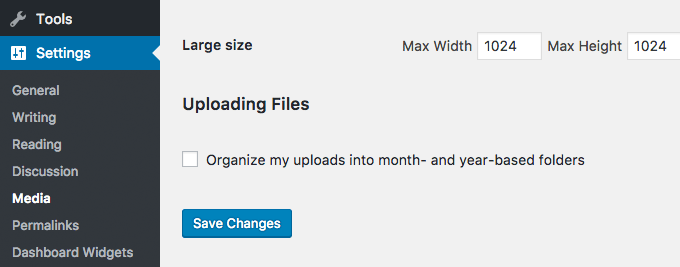Typically malicious scans use some sort of encoding to obscure their payloads. For example, instead of injecting a literal script, the attacker will run it through a PHP encoding function such as base64_encode(), utf8_encode(), or urlencode(). So if and when you need to decode some discovered payload, you can use whichever decoding function will do the job. For example, base64_decode(), utf8_decode(), or urldecode(). Sounds straightforward, but let’s dig a little deeper.. Continue reading »
![[ WordPress .htaccess file ]](https://perishablepress.com/wp/wp-content/images/2017/wordpress-htaccess.jpg)
The WordPress core uses .htaccess for two things: Permalinks and Multisite. This means that .htaccess is only required if you have enabled either of these features. Otherwise, .htaccess is entirely optional for default WordPress installations. Beyond the WP core, many plugins also use the .htaccess file for custom directives involving rewrites, redirects, custom headers, file compression, and much more. In many cases, such plugins add their .htaccess rules to your .htaccess file automatically, behind the scenes. Continue reading »
This tutorial explains numerous ways to get random items via PHP: numbers, strings, passwords, nonces, images, and more. I use these techniques in various projects, and want to round them all up in one place for easy reference. I’ll be updating this post with additional techniques as I get them. Continue reading »
Once again I am cleaning up my sites’ .htaccess files. I do this from time to time to remove old redirects, refresh blacklists, and update security and SEO-related directives. It’s tedious work, but the performance and security benefits make it all worthwhile. This post shares some of the techniques that were added, removed, or replaced from .htaccess, and explains the reasoning behind each decision. I do this for the sake of reference, and hopefully it will give you some ideas […] Continue reading »

In this tutorial, I’m going to walk you through how you can add a new menu in WordPress Admin Area, where your users will be able to import any demo content — including widgets, their positions and navigation as well — by a single click. The code follows the best WordPress practices, uses WP Filesystem for file management, includes escaping and all text strings are prepared for translation. It also passes the WordPress theme check plugin! Continue reading »
![[ Perishable Press : Stop WordPress from modifying .htaccess ]](https://perishablepress.com/wp/wp-content/images/2019/wordpress-htaccess.jpg)
By default, depending on file permissions, WordPress automatically will modify the contents of your site’s .htaccess file. It does this on several occasions, adding and/or updating the rewrite rules required for WP’s permalink functionality. This post explains how this works, why it can be dangerous, and how to stop it from happening. Continue reading »
Years ago, I thought the whole humans.txt thing was just silly, and even explained how to block humans.txt requests. But the concept actually has grown on me to the point where I now include a customized humans.txt file for most of my projects. It just seems like some useful information to make available for those who are looking for it. You know, all about the site, author, team, and such. And I have seen plenty of requests for humans dot […] Continue reading »
![[User Enumeration ]](https://perishablepress.com/wp/wp-content/images/2016/user-enumeration.jpg)
This tutorial explains how to block user-enumeration scans in WordPress. As explained in greater depth here, user enumeration happens when some malicious script scans a WordPress site for user data by requesting numerical user IDs. For example, requests for author=1 through some number, say, author=1000, may reveal the usernames for all associated users. With a simple enumeration script, an attacker can scan your site and obtain a list of login names in a matter of seconds. Continue reading »
![[ RSSing.com Removal Request or Whatever ]](https://perishablepress.com/wp/wp-content/images/2016/rssing-com.jpg)
This quick post explains how to stop the notorious site scrapers, RSSing.com, from stealing your content. In fact, this technique can be used to stop virtually any site that uses HTML frames to scrape your pages. Once again, the solution is one line of .htaccess to the rescue. Continue reading »

Over the years, my sites have been hacked numerous times. Each hacking event was somewhat of a miserable experience at first, but ultimately educational and even enlightening. I’m not going to say that getting hacked was the best thing that ever happened to me, but it certainly wasn’t the end of the world. In this post, I want to share some important steps to take and things to keep in mind if and when you discover that your site has […] Continue reading »
I use s2member (free version) and s2member Pro on a few of my sites. Have been for several years now. Over the course of time, I have amassed a healthy collection of notes, code snippets and techniques for customizing default functionality, adding features, and so forth. Gonna post the collection online for the benefit of any others who may be seeking for similar modifications and/or related information. Continue reading »
One of the most annoying, persistent scans I’ve seen in a long time are those hunting for the revslider vulnerability. In the five or so months since the exploit was discovered, many sites have been compromised. And based on what I’ve been seeing in my traffic logs, the risk is far from over. Apparently every 2-bit script kiddie and their pet hamster wants a piece of the “revslider action”. Continue reading »
![[ Protect yourself ]](https://perishablepress.com/wp/wp-content/images/2014/gas-mask-dog.jpg)
Whether you like it or not, there are scripts and bots out there hammering away at your sites with endless HTTP “POST” requests. POST requests are sort of the opposite of GET requests. Instead of getting some resource or file from the server, data is being posted or sent to it. To illustrate, normal surfing around the Web involves your browser making series of GET requests for all the resources required for each web page. HTML, JavaScript, CSS, images, et […] Continue reading »
![[ WP Plugin: Core Control ]](https://perishablepress.com/wp/wp-content/images/2014/core-control.gif)
Just a quick post with some tips for troubleshooting and testing HTTP requests. For example, if you have a plugin that sends requests behind the scenes via Ajax or cURL or whatever, it’s nice to have a way to view request details such as headers, the response, and everything in between. This article is aimed primarily at WordPress users, but contains more general tips and tricks as well. Continue reading »
![[ Screenshot: Unordered list wrapping against floated image ]](https://perishablepress.com/wp/wp-content/images/2013/css-list-float-01.jpg)
If you’re displaying floated images in your posts, you may notice that margins of lists and other block-level elements seem to “collapse”, as shown in this screenshot from the 2013 redesign: Continue reading »
Just as there are specifications for designing with CSS, HTML, and JavaScript, there are specifications for working with URIs/URLs. The Internet Engineering Task Force (IETF) clearly defines these specifications in RFC 3986: Uniform Resource Identifier (URI): Generic Syntax. Within that document, there are guidelines regarding which characters may be used safely within URIs. This post summarizes the information, and encourages developers to understand and implement accordingly. Continue reading »

![[ WordPress .htaccess file ]](https://perishablepress.com/wp/wp-content/images/2017/wordpress-htaccess.jpg)

![[ Perishable Press : Stop WordPress from modifying .htaccess ]](https://perishablepress.com/wp/wp-content/images/2019/wordpress-htaccess.jpg)
![[User Enumeration ]](https://perishablepress.com/wp/wp-content/images/2016/user-enumeration.jpg)
![[ RSSing.com Removal Request or Whatever ]](https://perishablepress.com/wp/wp-content/images/2016/rssing-com.jpg)

![[ Protect yourself ]](https://perishablepress.com/wp/wp-content/images/2014/gas-mask-dog.jpg)
![[ WP Plugin: Core Control ]](https://perishablepress.com/wp/wp-content/images/2014/core-control.gif)
![[ Screenshot: Unordered list wrapping against floated image ]](https://perishablepress.com/wp/wp-content/images/2013/css-list-float-01.jpg)
